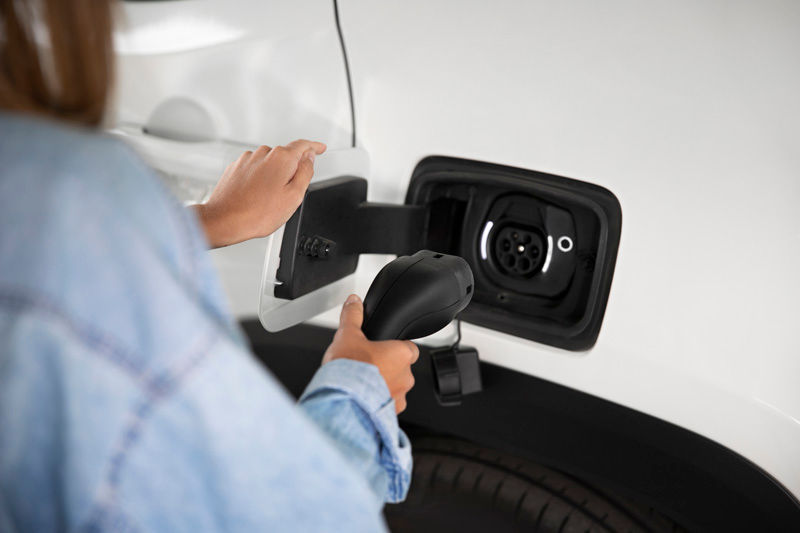Overcoming Range Anxiety When Driving an Electric Vehicle
- circular connection
- 13 minutes ago
- 3 min read
Range anxiety remains one of the biggest concerns for drivers considering the switch to an electric vehicle (EV).

Image: Circular Connection
The fear of running out of battery power before reaching a charging station can deter potential EV adopters. However, recent advances in battery technology and charging infrastructure are making EV ownership more realistic in Singapore.
Understanding Range Anxiety
Range anxiety refers to the worry that an EV may not have sufficient battery charge to complete a journey. Unlike traditional fuel-powered vehicles, which can be refueled quickly at numerous petrol stations, EVs rely on access to charging points and the time to charge up.
Why the Concern Is Easing in Singapore

Image: Circular Connection
Longer driving ranges
Modern EVs offer substantially greater driving ranges. In Singapore, many new models now deliver between 300 km to 500 km or more on a full charge.
For example, the BYD Atto 3 is listed with an estimated range of up to around 480 km for its Extended Range variant. Another example is the BMW i5 eDrive40 Touring which shows an electric range of 526 to 603 km (WLTP). These figures give drivers a much larger buffer between charges, which helps reduce range anxiety substantially.
Public and workplace charging infrastructure
While many Singapore residents live in high-rise flats under the Housing and Development Board (HDB) scheme and do not have the option to install private home chargers, the presence of public and workplace charging stations is increasing.
According to the Land Transport Authority (LTA), a full charge for an average driver can provide roughly 300 km of range, which meets much of the typical usage profile. The Straits Times states that an EV with a 300 km range is already quite viable in Singapore, given about 3,000 public chargers. Thus, one strategy for urban drivers is to rely on public fast charging stations and plan their routes around locations that offer destination charging.
Smart driving habits
Efficiency in driving can also help reduce effective range anxiety. By moderating speed, avoiding aggressive acceleration, using regenerative braking, and planning charging stops in advance, drivers can squeeze more usable distance out of the battery. Furthermore, awareness of factors that reduce range such as heavy air conditioning use, hilly terrain, high payload, or high speeds helps drivers set realistic expectations.

Image: Plugshare
Practical Tips to Ease Range Anxiety When Driving an Electric Vehicle
Select an EV with sufficient range: Aim for a model that delivers 400 km or more if possible, so that occasional longer trips do not cause stress.
Familiarise yourself with public charging points: Use apps and EV navigation systems to locate nearby chargers, check availability, and find fast charging options along your route.
Plan for destination charging: If you stay in HDB flats without dedicated charging options, identify workplace charging or chargers near frequent destinations such as shopping centres and malls.
Drive smartly: Moderate your speed, optimise regenerative braking, reduce non-essential energy consumption such as aggressive air conditioning use, and adopt a smooth driving style to extend real-world range.
Account for range reducing factors: In Singapore's heat and humidity, air conditioning load can reduce range. Also consider the influence of road conditions and traffic congestion.
Use longer range models if you travel farther: If you regularly commute or take longer trips such as to Malacca or Johor, choose an EV with the highest realistic range to minimise charger stops and anxiety.
Realistic Outlook

AI Image: OpenAI
Given that most drivers in Singapore travel around 50 km per day on average, even an EV with 300 km range can cover many days of use before needing a recharge. Thus range anxiety in urban Singapore is increasingly a manageable concern rather than a barrier.
As most Singaporeans live in high-rise flats where home charging is not feasible, EV adoption depends heavily on reliable public and workplace charging infrastructure.
Conclusion

Image: Freepik
Range anxiety is becoming less of a fundamental obstacle to electric vehicle ownership in Singapore. Modern electric vehicles now offer substantial driving ranges and charging infrastructure is growing. For residents of high-rise flats, it is wise to prioritise an EV with strong range and plan around destination-based charging.
With informed choice and a bit of planning, electric driving becomes both practical and sustainable.








